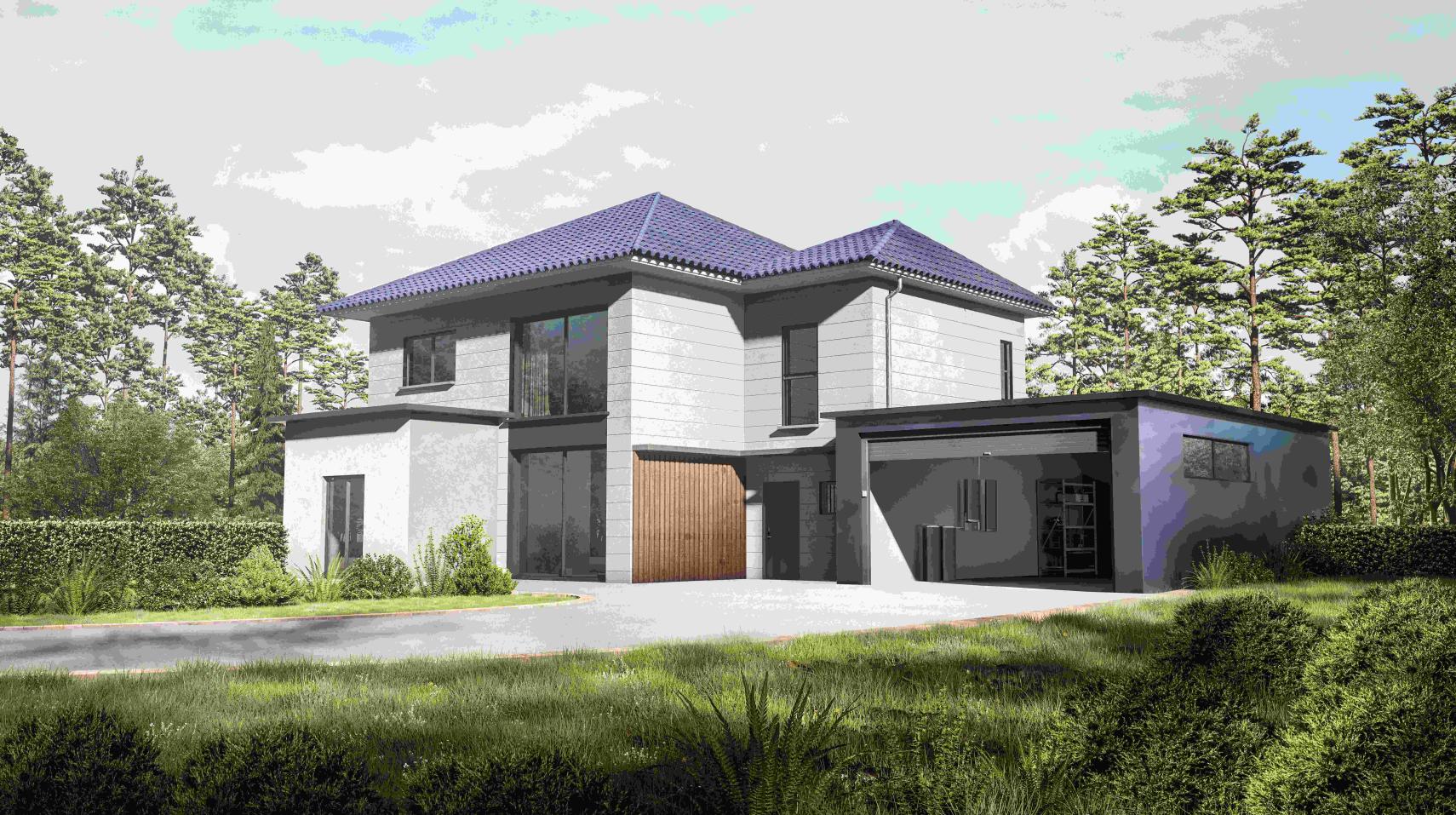A Complete Guide to SGIP in 2025
If you live in California, you may be able to get money to add clean energy to your home or business. This support comes from SGIP, which stands for Self-Generation Incentive Program. SGIP is a program from the California Public Utilities Commission (CPUC). It gives rebates to people who install clean energy systems. These systems include batteries, solar panels with batteries, and other advanced technologies.
In 2025, the program includes new funding, special rules for low-income families, and extra support for people who live in wildfire or power outage zones. This guide explains what SGIP is, who can apply, how much money is available, and how to complete the process.
What Is SGIP and What Does It Do
SGIP helps people and businesses install clean power systems on their property. The systems must be connected to the customer's side of the electric meter. The energy produced must be used at the site. SGIP does not apply to systems that sell power back to the grid only.
SGIP supports many types of technologies:
Battery storage systems
Solar systems paired with storage
Wind turbines
Waste heat to power systems
Fuel cells
Linear generators
Pressure reduction turbines
Combined heat and power systems
In 2025, SGIP has a special focus on residential battery storage and paired solar systems. There is also new funding for people in low-income areas, wildfire zones, and people who rely on electric-powered medical devices.
Who Can Apply for SGIP
The program is open to many groups in California. Each group must meet certain requirements. Some groups can get higher rebates. Others can apply under general rules.
Eligible User Types
| Type | Can Apply | Notes |
| Single-family homeowners | Yes | Must be electric or gas customer of PG&E, SCE, SDG&E, or SoCalGas |
| Renters | Yes | Need written approval from the owner |
| Low-income households | Yes | Must show income documents or be in certain programs |
| Multifamily buildings | Yes | At least 5 units and meet low-income housing rules |
| Small businesses | Yes | Must be in a low-income or wildfire-prone area |
| Non-profits and schools | Yes | Must serve qualifying communities |
| Large companies | Yes | Apply under general budgets only |
5 Special Conditions That Increase Support
Some people can receive higher rebates under SGIP. This is called Equity Resiliency or Pilot support. These special rules focus on people who are more likely to lose power or have fewer resources.
You may qualify for extra support if any of the following apply:
You live in a Tier 2 or Tier 3 High Fire-Threat District
The California Public Utilities Commission (CPUC) has a fire risk map. If your home is in a red or orange fire risk area, you can get more SGIP funds. You do not need to prove fire damage—only your address and location.
You have experienced two or more Public Safety Power Shutoffs (PSPS)
PSPS events are when the utility shuts off electricity to prevent wildfires. If your address has had two or more PSPS events, you may qualify for the Equity Resiliency program. This is tracked using utility data.
Someone in your home uses medical equipment that needs electricity
If you or a family member uses electric-powered medical devices at home, like oxygen machines or mobility aids, you can get extra support. You must be enrolled in your utility’s Medical Baseline Program and provide documents.
Your household income is at or below 80% of the Area Median Income (AMI)
This rule applies to single-family homes and renters. You can prove income using tax documents or enrollment in other programs like CARE or FERA. This rule also applies to low-income multifamily properties.
You live in one of the 11 cities in the San Joaquin Valley Pilot Program
SGIP has a separate support group for homes in parts of the San Joaquin Valley. These cities were chosen because they do not have access to natural gas and face special energy problems. Projects here can get the highest rebates. The 11 cities include places like Allensworth, Alpaugh, and Seville (see full list in Appendix C of the SGIP Handbook).


How Much Support Can You Get From SGIP
The amount of money you can receive depends on your user type, location, and the type of system you install.
SGIP Rebate Amounts
Program Type | Storage Support | Solar Support | Notes |
Residential Solar and Storage Equity | $1,100 per kWh | $3,100 per kW | Low-income homes only |
Equity Resiliency | $1,000 per kWh | Not included | Must meet resiliency rules |
San Joaquin Valley Pilot | $1,100 per kWh | Not included | Only 11 specific cities |
Small Residential Storage | $150 to $500 per kWh | Not included | Based on step levels |
Non-Residential Equity | $850 per kWh | Not included | For small businesses and community buildings |
Large-Scale Storage | $250 to $500 per kWh | Not included | For large systems only |
Generation Systems | Up to $2,000 per kW | Not included | Includes wind and fuel-based systems |
For more detailed information, check the official 2025 SGIP Handbook.
Sample Project Rebate Amounts
Let’s take the EcoFlow Ocean Pro Battery as a vivid illustration to see how SGIP can support a clean energy upgrade. It is a 10 kWh modular battery unit. It can work with the Ocean Pro Inverter to create a strong, scalable backup system.
Here’s how the rebate might look for a low-income home using one EcoFlow OceanPro battery:
System Component | Unit Size | SGIP Rebate (Low-Income) | Total Incentive |
OceanPro Battery | 10 kWh | $1,100 per kWh | 10 × $1,100 = $11,000 |
Paired Solar System | 3 kW | $3,100 per kW | 3 × $3,100 = $9,300 |
Combined Rebate | — | — | $20,300 |
If the same battery is used in a home that does not qualify for equity-level support, the rebate comes from the small residential storage budget. That level offers $150 to $500 per kWh, depending on current step levels. A 10 kWh Ocean Pro Battery in this case might receive between $1,500 and $5,000.
If you install more than 10 kWh, SGIP may still help. Normally, the limit is 30 kWh for regular homes. But if you meet extra conditions, such as living in a high fire risk area, using medical devices, or facing repeated outages, you can apply for rebates up to 80 kWh.
For example, if you install an 80 kWh OceanPro system and qualify for Equity Resiliency, the rebate could reach:
80 × $1,000 = $80,000
EcoFlow’s system is designed to grow with your needs. SGIP can grow with you, too, if you meet the right criteria.
Highlights of Ocean Pro Battery
The EcoFlow Ocean Pro Battery is not just big—it’s built to last and protect. Here are the key features that help it work well with SGIP support:
- 10 kWh Base Size. Each unit starts with 10 kWh of storage. You can add more units if your home needs more power.
- Expandable to 80 kWh. Stack up to 8 units. This is useful for big homes or families in wildfire zones or with medical needs.
- Strong Outdoor Protection. The battery has IP67 protection. It can handle floods up to 2.6 feet and heat up to 140°F. Perfect for tough places.
- Fire Safety Built In. It has a fire control system and an explosion-proof valve. Safety is top-level, even in bad conditions.
- 15-Year Warranty. You get support for a long time. The product is made for homes and commercial use.
- Smart Power Management. It works with EcoFlow’s inverter and app. You can see your energy use and control it anytime.
- Fast Installation Support. EcoFlow works with trained local installers. They set up your system fast and follow SGIP rules closely.
If you want to apply for SGIP, OceanPro is ready.
How to Apply to SGIP
SGIP has two different application processes. The steps depend on who you are and how big your system is. If you are a homeowner or have a small system, the process is shorter. If you are a business with a large system, you will follow a few more steps.
For Residential and Small Non-Residential Projects
(All homes and non-residential systems smaller than 10 kW)
This group uses a two-step process.
Submit Reservation Request Form (RRF)
Fill out the RRF online and send it to your SGIP Program Administrator. You need to include your system plan, location, and other documents. If approved, you will get a Confirmed Reservation Letter.
Submit Incentive Claim Form (ICF)
After your system is installed and working, submit the ICF. You must include photos, your utility's PTO letter, and invoices. This must be done within 12 months of your reservation letter. SGIP may schedule an inspection. If approved, your rebate payment will begin.
For Large Non-Residential Projects
(Non-residential systems 10 kW or larger)
This group uses a three-step process.
Send the RRF form to the SGIP Program Administrator. This is your first step to hold a spot in the program. If approved, you will get a Conditional Reservation Letter.
Submit Proof of Project Milestone (PPM)
You must send in the PPM within 90 days after your conditional letter. The PPM shows that your project is real and on track. If approved, you will get a Confirmed Reservation Letter.
Once your system is installed and working, submit the ICF. You must do this no later than 18 months after the conditional letter. Include all documents: photos, PTO letter, and cost proof. SGIP may inspect the site. After final approval, you will receive your rebate.


Secure Your Energy Independence with SGIP Funding
SGIP is a strong way to support energy independence, cost savings, and better power backup. In 2025, SGIP has new rules, more money for special users, and an easier process for homeowners. The most help goes to people who are most at risk, such as low-income families and those in fire danger zones.
You can check your eligibility, select a trusted developer, and start your application at www.selfgenca.com. If you plan ahead and choose the right budget, your battery or solar system may be mostly paid for through SGIP.
FAQs About California's SGIP Program
Q1: Do I need solar panels to get SGIP battery rebates?
No. You can apply for SGIP rebates with just a battery system. You don’t need to install solar. But if you are a low-income homeowner, you may get more money if you install both solar and a battery.
Q2: What if I’m not the utility account holder? Can I still apply?
Yes. You can still apply as a third-party applicant. You will need the utility meter number, proof that you live there, and a signed letter from the account holder saying they allow the project and the SGIP application.
Q3: Is there a deadline for SGIP? Or is it first come, first served?
SGIP uses a rolling application system. Some programs give rebates in the order they are received. Others may use a lottery system or close early if all funds are used. It’s better to apply early before budgets run out.
Q4: Will I need to pay tax on my SGIP rebate?
In most cases, SGIP rebates are not taxed at the federal level. But your tax status may be different. It’s best to talk to a tax expert before you file your taxes.
Q5: Can I still apply for SGIP if I already got another rebate, like a federal tax credit?
Yes. SGIP can be combined with the federal tax credit (ITC), the TECH Clean California program, and other local rebates. But you must list all other funding sources when you submit your SGIP application.